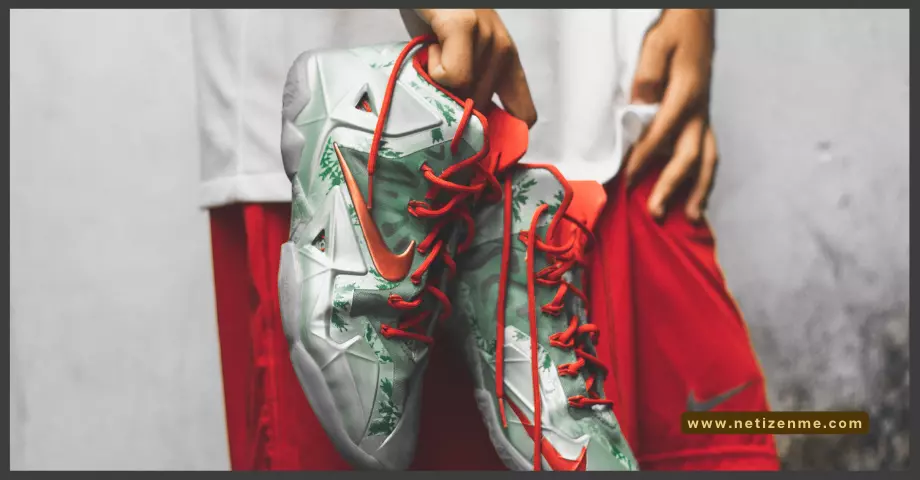Positive And Negative Impacts of Nike’s Expansion Strategy
Nike’s expansion strategy was in a bid to find lower-cost producers. They eventually moved to lower-cost countries, predominantly in Southeast Asia. This expansion meant having many vendors, including those with short contracts, making Nike have little control over the activities in the factories in terms of processes and the working conditions that affected employees.
Nike Accused of Unethical Practices: The What and The How
The expansion of Nike’s manufacturing processes to low-cost countries came with accusations of unethical practices. The allegations concerned labor laws, health and safety, and working conditions. This news made the rounds in the 1990s as significant publications spread NGOs, and articles investigated their factories each time. While they were quite a few, some of which made significant rounds include:
1. The Issue of Child Labor in Pakistan
Sialkot, Pakistan, is famous for being the home of the production of high-quality soccer balls. Nike, alongside many of the leading athletic brands, sourced their soccer balls from factories there. An article on child labor was published in Life magazine in June 1996. That article struck the brand image of Nike quite severely. Partly, this was because the image accompanying the article was that of a young boy hand-stitching a Nike soccer ball. As child labor is firmly against international labor practices, there were a lot of criticisms from stakeholders and the public in general.
2. Health and Safety Issues in Vietnam
Ernst and Young commissioned an audit by Nike on one of their subcontractors, the Tae Kwang Vina factory, in Vietnam. This factory was one of Nike’s largest factories, with a monthly production capacity of more than 400,000 pairs of shoes. The audit report was leaked to an NGO in November 1997 and made public. It showed that there were serious health risks posed to workers in the factory. That resulted from the presence of the carcinogenic chemical Toluene, which was present at high levels. The chemical was known to cause several ailments. Indeed, there were already reports of cases of respiratory ailment, skin, and heart disease among some employees. Further, they reported that workers were not given the necessary personal protective equipment putting them at risk for safety hazards.
3. Below Daily Minimum Wage in Indonesia
The use of media by several NGOs exposed the situation in Nike’s supplier’s factories, particularly those with Korean managers. There were reports about the poor working conditions alongside pay below the daily minimum wage of roughly $1. The shoe manufacturing companies in Indonesia would appeal to the government to waive them by paying the legal minimum wage.
These three cases summarize and fully represent the practices and accusations against Nike.
Positive Impacts of Nike’s Expansion Strategy
Nike’s expansion strategy worked well for them as a business. They could enter the market, increase sales, and make a profit. As a result of their low cost of production, they can spend more resources on design and marketing, making them the largest athletic shoe company in the world, with a brand recognizable anywhere.
The Negative Impact of Nike’s Expansion Strategy
Particularly in the 1990s, due to their expansion to many low-cost countries in Southeast Asia, Nike got involved in accusations of some unethical practices. These corrupt practices included child labor, health and safety issues, inhumane working conditions, and low wages. When these investigations came to light, Nike faced harsh criticism from consumer bodies, trade unions, and human rights activists. As a result, this had a negative impact on Nike and its brand and business:
- There were negative articles about Nike in several leading newspapers and websites created solely to spread the news about the practices.
- Some universities were forced by their student body to cancel orders they made for athletic products.
- There were organized boycotts of Nike goods by consumer and labor groups.
- There was a reduction in sales and the creation of a negative brand image.
What Was Nike’s Response to The Situation?
Nike’s initial response was to deny any responsibility for breach of labor laws and poor working conditions in the factories they got supplies from. They argued that they did not have the influence to monitor the activities in the factories and that the workers involved were not directly Nike employees, but this stance changed in 1992. They devised a code of conduct that every supplier or potential supplier had to sign and paste in their offices. This code of conduct contained standards to be upheld regarding labor laws and working conditions. They progressed to increase the minimum working age for factory workers in 1998.
They have since:
- Created new departments and trained staff to oversee labor and environmental compliance in all supplier factories.
- Founded or partnered with organizations that ensure standard working practices in developing countries.
- Carried out SHAPE inspection, which involves preliminary inspection of factories to ensure they meet the standard for good working conditions and another internal and external audit to ensure they uphold labor practices.
Critical Feedback
While people have praised the response of Nike to the accusations, and now years later, there are several articles about it, there were also criticisms.
In a bid to improve public relations, Nike asked and paid former UN Ambassador Andrew Young to visit some of its supplier’s factories in Asia for inspection. Young gave a positive report, but human rights activists criticized the report as inaccurate and biased.
Mr O’Rourke, an environmental consultant of the United Nations Industrial Development Organization, also a research associate at the Transnational Centre, criticized the response of Nike concerning the health and safety issue in their Vietnam factory. He said in his visit to the factory, months after Nike claimed to have worked on the situation, that the working condition of the workers was still wrong. Also, he said that he believed the external audit by Ernst and Young went easy on Nike and could not be trusted. Moreover, he suggested the use of noncommercial groups like human rights groups to inspect factories instead to get more accurate reports.
Check the following reference articles to learn more about the Positive And Negative Impacts of Nike’s Expansion Strategy:
- The Promise and Perils of Globalization: The Case of Nike. [ebook] Cambridge: IPC Working Paper Series, Massachusetts Institute of technology, pp.1-24. Available at: (URL)
- Nike and Reputation Management. (URL)
- Nike Shoe Plant in Vietnam Is Called Unsafe for Workers (Published 1997). (URL)
This article is written by:
This article is written and edited by in-house writers and editors. Knowledge Netizen editorial team is committed to providing accurate and informative content. You can cite our articles under the author name "NetizenMe"





